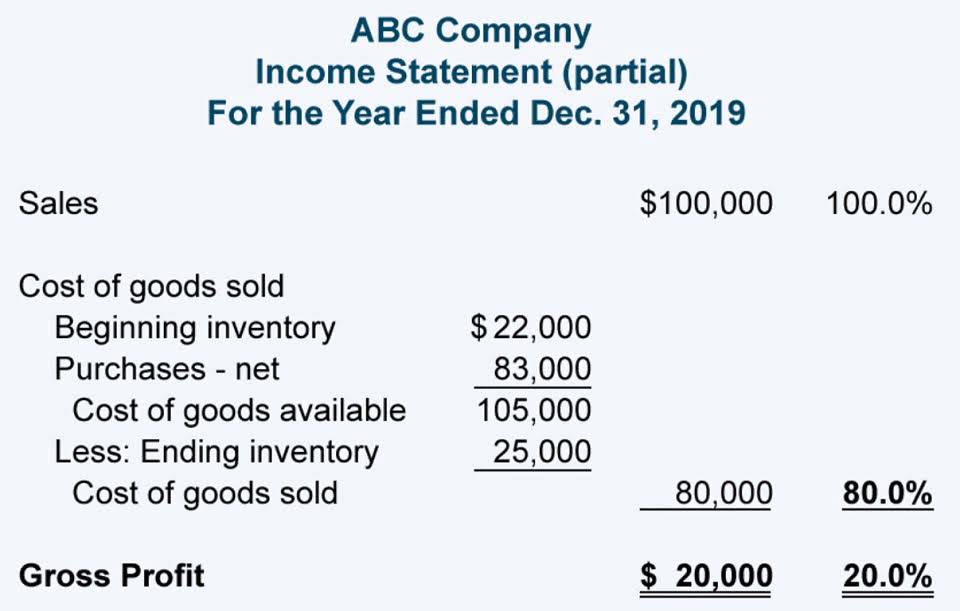
For individuals, it’s important to receive a K-1 for the relevant financial interest and then report that information correctly on the individual’s tax return. When a partnership files Form 1065 with the IRS, outlining its financials, it must also prepare a Schedule K-1 for each partner to reflect their share of any profits or losses or distributions from the business. Upon receiving their Schedule K-1, each partner includes the information on their personal tax return for the year.
Browse by type
If this occurs, the corporation must provide the following information. The nondeductible expenses paid or incurred by the corporation aren’t deductible on your tax return. Generally, you must decrease the basis of your stock by this amount. If section 42(j)(5) applies, the corporation will report your share of the low-income housing credit using code C. Any allowable low-income housing credit reported using code C or code D is reported on Form 8586, Low-Income Housing Credit, line 4, or Form 3800, Part III, line 4d (see TIP , earlier). In column (a), enter the name of the corporation and “interest expense.” If you materially participated in the trade or business activity, enter the interest expense in column (i).
What Is a 1099 Form? Reporting Your Income for Taxes
All securities involve risk and may result in significant losses. Yieldstreet provides access to alternative investments previously reserved only for institutions and the ultra-wealthy. Our mission is to help millions of people generate $3 billion of income outside the traditional public markets by 2025. We are committed to making financial products more inclusive by creating a modern investment portfolio. Part I deals with the Partnership information, which will be completed by Yieldstreet to identify the individual SPV name and tax identification number, depending on the investment opportunity that this K-1 is for.
Accounting Difference for a Partnership & Corporation

If you are an individual shareholder, report this amount on Form 6251, line 2l. Code E. Capital gain property to a 50% limit organization (30%). Every corporation that had operations in, or related to, a boycotting country, company, or a national of a boycotting country must file Form 5713, International Boycott Report. Your share of S corporation income isn’t self-employment income and it isn’t subject to self-employment tax. Tim Plaehn has been writing financial, investment and trading articles and blogs since 2007. His work has appeared online at Seeking Alpha, Marketwatch.com and various other websites.
A Guide to Preparing General Partnership Financial Statements

K-1 ETFs are subject to the 60/40 rule, meaning they’re taxed at 60% long-term gains and 40% short-term gains regardless of the holding period. As a result, short-term traders that would normally pay 100% short-term gains could benefit the lower long-term tax rate. Customized to investor preferences for risk tolerance and income vs returns mix. Any other information you may need to file your return not shown elsewhere on Schedule K-1 or Schedule K-3. Use the amounts the corporation provides you to figure the amount to report on Form 3468, Part IV, line 1b. Use the amounts the corporation provides you to figure the amounts to report on Form 3468, Part III, line 1a.

Schedule K-1: What to Know About Investment Partnership Interests
If you terminated your interest in the partnership during the tax year, item K1 should show the share that existed immediately before the total disposition. A partner’s recourse liability is any partnership liability for which a partner is personally liable. Enter as a negative amount the current year deduction for depletion of any partnership oil and gas property, not to exceed your allocable share of the adjusted basis of the property. Enter the cash and marketable what does k1 mean securities distributed to you by the partnership as reported in box 19, code A, of Schedule K-1. If a decedent died in a prior year and the partnership continues to send the decedent a Schedule K-1 after being notified of the decedent’s death, then you should request that the partnership send a corrected Schedule K-1. If you receive an interest in a partnership by reason of a former partner’s death, you must provide the partnership with your name and TIN.
If you didn’t materially participate in the activity:
Your share of qualified rehabilitation expenditures related to rental real estate activities is reported in box 13 using code E. If the corporation is reporting expenditures from more than one activity, the attached statement will separately identify the expenditures from each activity. The corporation will report your share of the qualified rehabilitation expenditures and other information you need to complete Form 3468 related to rental real estate activities using code E. Your share of qualified rehabilitation expenditures from property not related to rental real estate activities will be reported in box 17 using code C. If the corporation is reporting expenditures from more than one activity, an attached statement will separately identify the expenditures from each activity.
- The partnership may need information from you to calculate relevant basis.
- Exclude BIE that was included in reporting losses in box 1, 2, or 3 of Schedule K-1.
- Investing in private placements requires long-term commitments, the ability to afford to lose the entire investment, and low liquidity needs.
- If box 16 isn’t checked, you should receive notification from the partnership that you won’t be receiving a Schedule K-3 unless you request one.
- You may be treated as actively participating if you participated, for example, in making management decisions or arranging for others to provide services (such as repairs) in a significant and bona fide sense.
- Both the partnership and you must meet the qualified nonrecourse rules on this debt before you can include the amount shown next to Qualified nonrecourse financing in your at-risk computation.
Although the partnership is reporting the beginning and ending balances on an aggregate net basis, it’s generally required to keep records of this information on a property-by-property basis. If the partner is an https://www.bookstime.com/ individual, the partnership will enter the partner’s SSN or individual taxpayer identification number (ITIN). For all other partners, the partnership will enter the partner’s employer identification number (EIN).
If this occurs, the partnership must provide the following information. If the partnership provides an attached statement for code E, use the information on the statement to complete the applicable energy credit on Form 3468, Part VI. See Part VI—Energy Credit Under Section 48 in the Instructions for Form 3468. Increase the adjusted basis of your interest in the partnership by the amount shown, but don’t include it in income on your tax return.